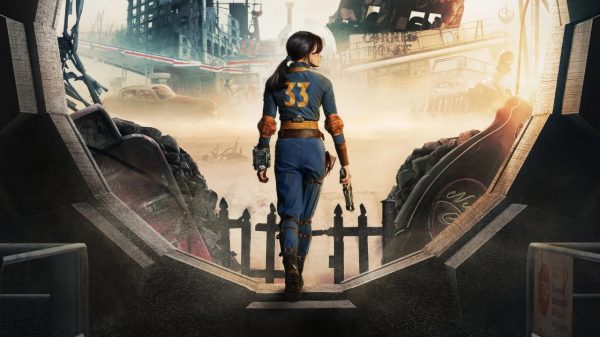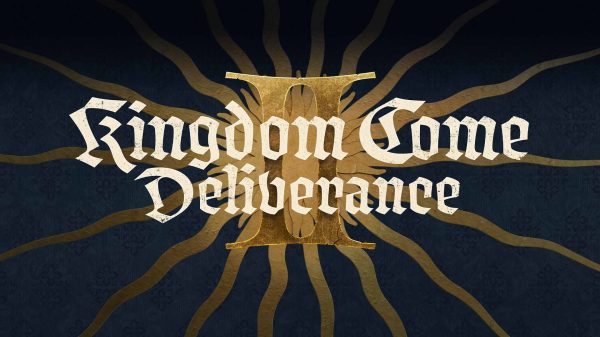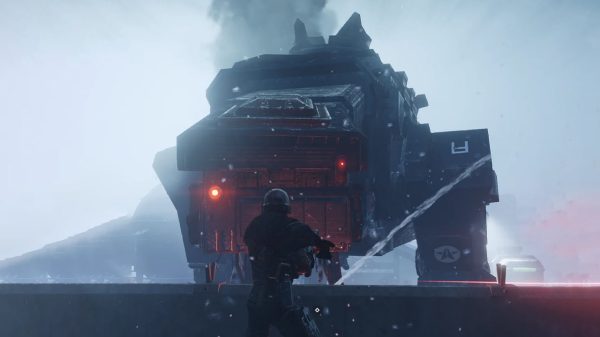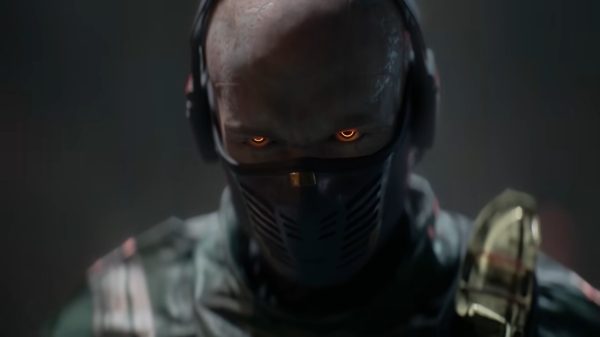The Second World War is probably the most documented war in history. Countless books, documentaries, movies, and TV programs have catalogued the most devastating war in history in ways that no other period of history can boast. Entertainment doesn’t shy away from it either, which is where our good friend video games comes in.
Games are absolutely no stranger to the Second World War. They date back to (at least) Castle Wolfenstein in 1981. 2002’s Battlefield 1942 made playing through the war’s epic battles possible, on a scale that hadn’t been seen before. Over the years, the franchise has jumped from place to place. Vietnam, modern warfare, a brief return to its roots with Battlefield 1943 in 2009, the First World War, and even the near future of 2142.
This week, Battlefield V bought us back to the franchise’s beginnings. WW2 is cool again, much to the groaning of players old enough to remember when games set in the conflict were everywhere. Much like Battlefield 1, controversy surrounding Battlefield V’s historical accuracy erupted nearly immediately. And, also like last time, it’s mostly founded on gamer butthurt. I took the liberty of tackling such controversy two years ago, and I’m ready to do it again.
Let’s take a look at each single-player campaign, and piece them together with what really happened.
Telemarked for death
Norway did not want war. It had maintained neutrality during the First World War, and pursued pacifism through much of the post-war years. Offers from Nazi Germany in early 1939 of a non-aggression pact were rejected to maintain this stance. But as the tense months dragged on, conflict with the new Reich became inevitable.
Norway was not prepared for war. It began rearmament just before war broke out, at the pleas of its military officials. Maritime incidents inside Norwegian waters put its neutrality into doubt, as far as the Nazis were concerned. Britain, too, began pressuring Norway to take a side. But neutral Norway stayed.
Yet, war came anyway. In early April of 1940, Nazi Germany invaded Norway under the pretence of protecting it from British and French ‘interference’. Britain and France attempted invasions as well, to open up another front of the war – which ultimately failed as these troops were redirected to the (failed) defence of France. Norway itself was ill-prepared for the Blitzkrieg and its last troops surrendered on the 10th of June. But some Norwegians weren’t willing to give up just like that.
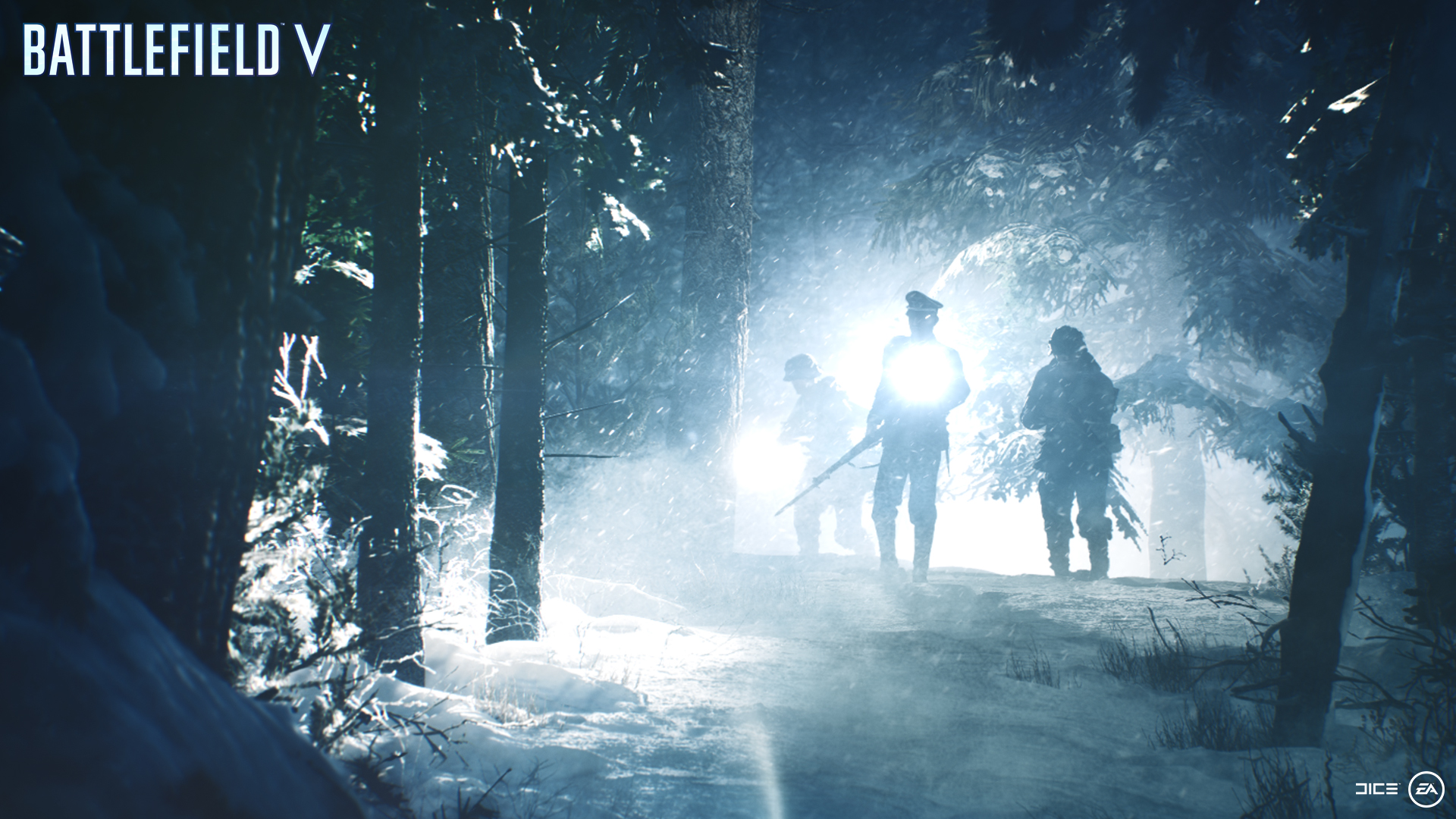
Looking for needles in a blizzardstack
A resistance movement sprung up in the days following the Nazi invasion. It smuggled dissidents and those the Nazis called ‘untermensch’ (sub-humans) out of Norway throughout the war. Brave Norwegians raided the occupier’s supplies and sabotaged their occupation efforts. They were even instrumental in the iconic sinking of the Bismarck, the pride of the ‘Kriegsmarine’ – the German navy. As with every other resistance movement, anybody that could/would shoot Germans was welcomed. Young or old. Black or white.
Man or woman.
The resistance’s most famous contribution to the Allied war effort is the subject of the first of Battlefield V’s ‘War Stories’: Nordlys.
The resistance fed geographical information, weather forecasts, and even captured German documents to the British secret service. This is where Nordlys comes in, where you play as a Norwegian resistance fighter named Solveig in the middle of the chaos. Her mission is to gather information to thwart a Nazi plot to beat the Allies in developing humanity’s greatest weapon, while enduring the bitter weather of the Norwegian mountains.
Mountainous regions have proven a thorn in the side of military commanders since the beginning of time. Luckily, things had improved somewhat by the 20th century. Skiing will play a major role in helping Sloveig move about. Ski warfare is actually older than you might think. Its use dates back to 19th century, but some sources go further back than that. It’s the only way to pass through some regions, including the mountains of Norway. There, both sides relied on skis to make good distance amongst the unforgiving mountains.
Nordlys’ focus though, is on what is arguably the resistance’s finest hour.
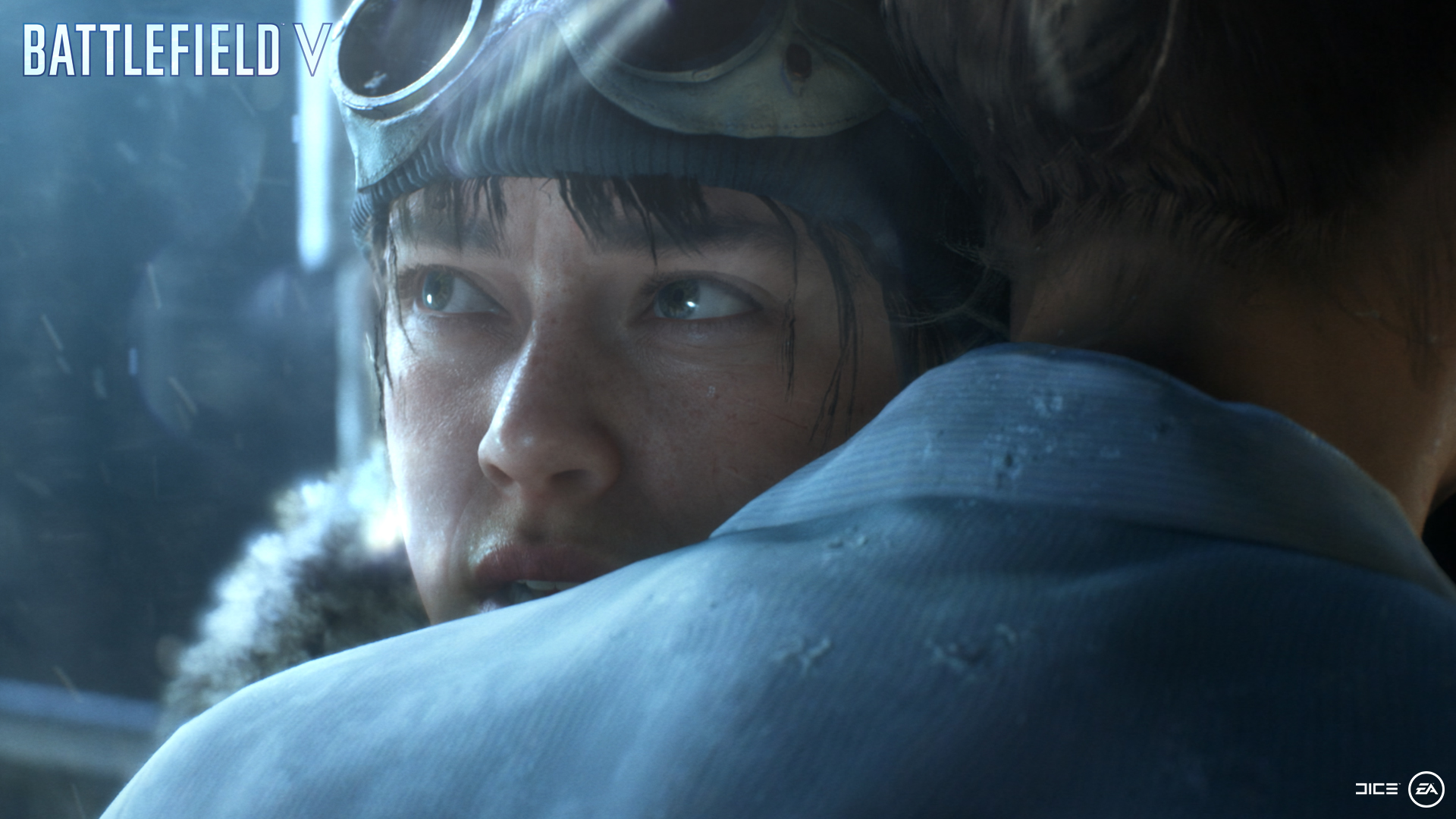
“Aah, did I remember to turn the stove off?”
Norway carried a greater prize than its land or sea. Hidden in Telemark, a region to Norway’s south, was the Vermork hydroelectric plant, the world’s largest source of ‘heavy water’. This priceless material was one of the first steps to creating atomic weapons.
This may be a somewhat controversial statement, but the Nazis having nuclear weapons would be a major problem for the Allies. If the plant remained functional, the Nazis could develop a nuclear arsenal and destroy countless lives. To set the Nazis’ nuclear efforts back permanently, the British conducted operations to knock Vermork out of commission.
There were problems from the very beginning. Vermork’s mountainous location (and German air superiority) made low-level bombing raids impossible, and the only reliable way into the plant itself was a single narrow bridge over a treacherous gorge. Therefore, a covert operation was needed. To do that, it’d need the help of the Norwegian resistance.
In 1943, resistance efforts to aid Allied operations came to fruition. A hand-picked team of British commandos (which included four Norwegian nationals that had fled to Britain), and members of the Norwegian resistance, raided Vermork and destroyed its capability to produce heavy water.
In case it wasn’t obvious, Nazi efforts to develop an atomic bomb were fruitless because of the brave actions of these ‘Heroes of Telemark’.
Nazi occupation of Norway would not end until the Reich’s capitulation in 1945. Nearly one and a half thousand Norwegian resistance fighters died fighting the evil that gripped their land.
Smooth criminal
Britain is no stranger to crime – no culture is – but Britain’s history of it is particular. While pre-industry crime was somewhat commonplace, the factories put it into overdrive.
Industrialisation since the 18th century forced people to the cities for work, packing them into cramped and destitute ‘workhouses’. Living in them was mandatory and offered no social mobility, which drove a countless number of people into lives of crime – just to get by. Through the 19th century, pamphlets and newspapers even perpetuated a public fascination with crime. Stories of criminals, true or not, became best-sellers.
Of course, the situation of the humble worker would get better over time. With greater financial security and social welfare came less crime. Britain’s fascination with crime would wane from the extremes of the Victorian era but would never really go away.
It’s no surprise, then, that this culture would seep into war.
Nations all over the world have incorporated the incarcerated for hundreds, if not thousands, of years. Britain in particular offered to-be-executed criminals a choice through much of its modern history: death, or service. The situation in 1940 was yet more dire, and more criminals were given opportunities for redemption by enlisting.
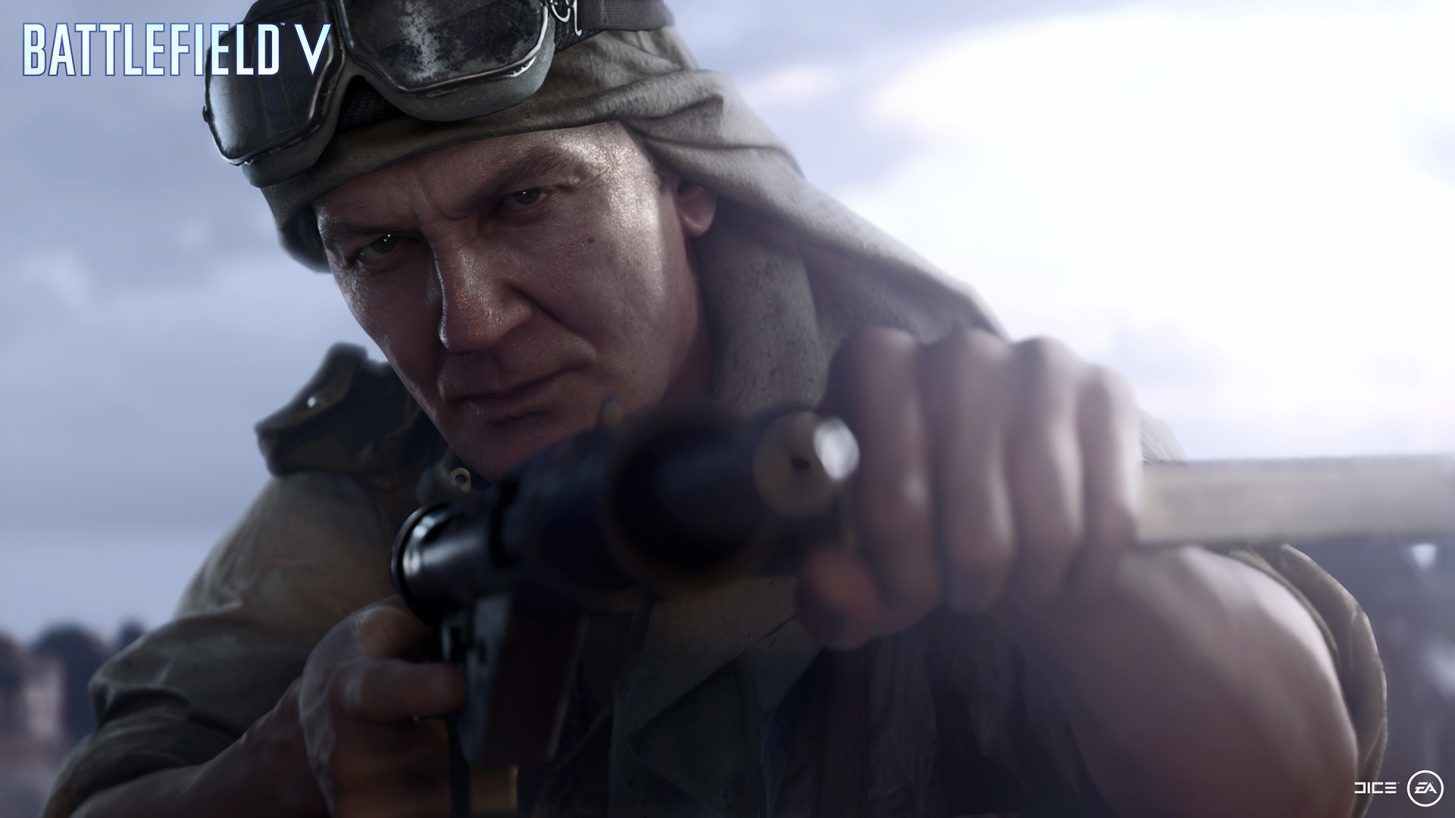
Rooty, tooty, point and (not) shooty
It’s worth noting that other nations deployed criminals in warfare, albeit less ‘democratically’. The German army deployed ‘Strafbataillons’, and the Soviets copied them to form ‘Shtrafbats’ in 1940. These units were composed almost entirely of criminals. They were poorly-trained and were expected to die in combat.
The British, though, were more inventive than their continental counterparts. Battlefield V’s next war story, Under No Flag, depicts the brutal cunning of Britain’s secret services.
After the fall of France in 1940, the British army (under orders from Prime Minister Churchill) formed several top-secret infiltration units. The most famous of these was the Special Air Service, but Under No Flag takes inspiration from another real-life unit: the Special Boat Service.
The SBS needed people who could think on their feet, with personal skills that were necessary for sabotage. Your character, Billy Bridger, has a knack for explosives and armed robbery. Put simply, they needed the hardest blokes around. Criminals fit that bill quite nicely.
The SBS would take part in numerous missions during the Second World War, but Under No Flag focuses on its Mediterranean operations. Most notably, they aided in the 1941 Allied defence of Greece, helping to evacuate troops and engaging in surveillance. In 1942, they were partially merged with the SAS to engage in North African operations under the name ‘Folboat Section’ (referring to the folding boats they used).
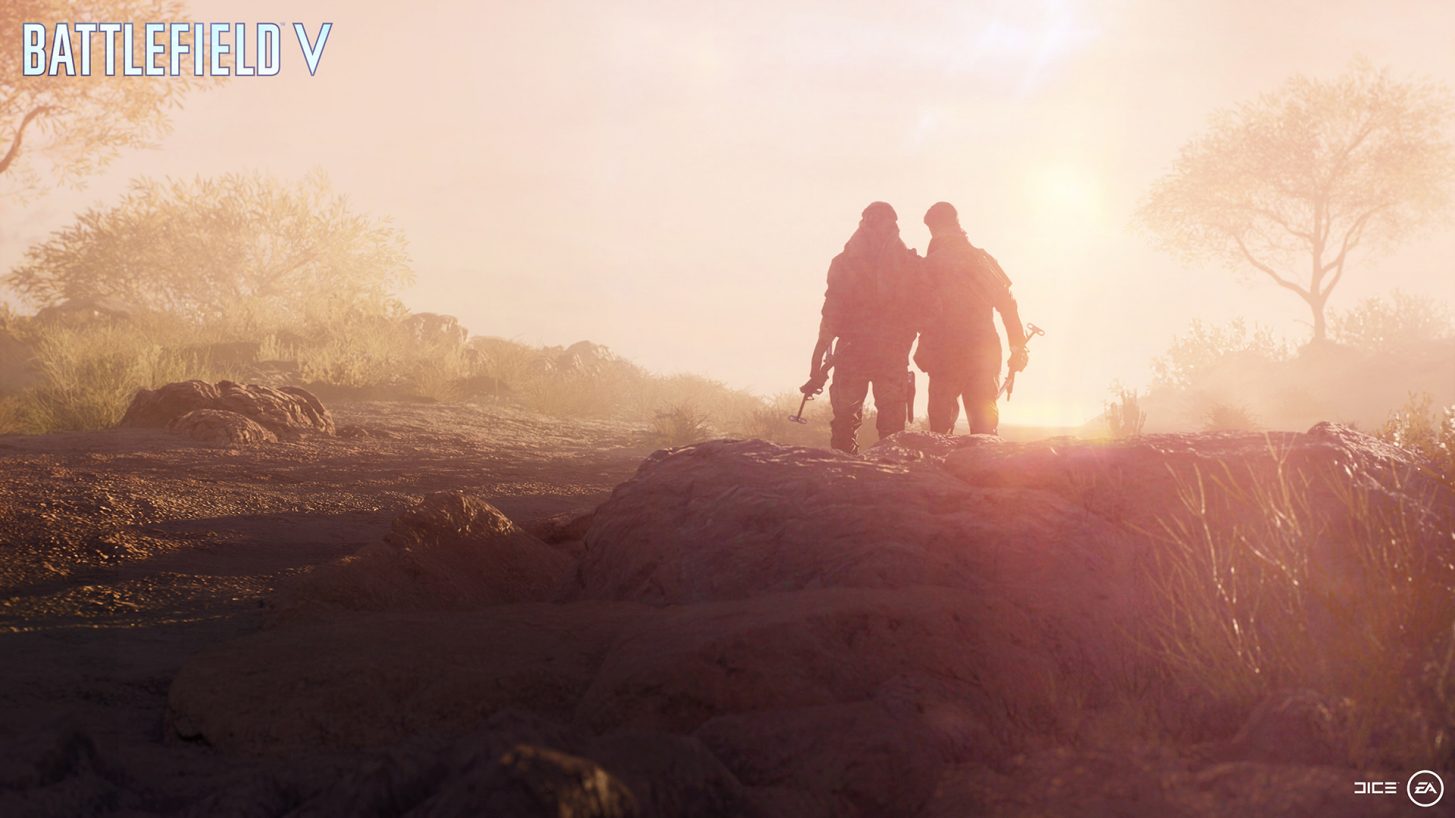
Everything the light touches is our kingdom
This latter theatre is probably the one depicted in Under No Flag. The SAS had been involved in North Africa since July of 1941, as this was what the force had been created for. The SAS’ first mission, though, was a resounding failure; more than a third of its men were killed due to bitter German resistance and valuable equipment was likewise lost.
Its second mission in the same year made up for the last. Assaults on airfields in Libya proved disastrous for the Nazi war effort. These operations proved to be a major boost for Operation Crusader – the breaking of the Siege of Tobruk and the very first British ground victory against Nazi Germany. The world now knew that the commandos and criminals called to secretly serve were a force to be reckoned with.
In this case, crime does pay.
Tirailleur and error
French surrender came as a shock to the entire world. There’d only been two months of fighting, in which her forces had been taken aback by the speed and ferocity of the Nazi war machine. France signed an Armistice in the same train car that the First World War’s Armistice had been signed in.
But France’s war didn’t end in 1940. As Northern France was added to the Reich, and the South became the Vichy puppet government, France’s overseas holdings kept the fight going. Those who didn’t surrender, but fled to fight another day, orchestrated the French Resistance and even set up a new French army. ‘Free France’ saw thousands of French nationals overseas enlist to continue fighting. The bulk of Free France’s armies, though, would come from their colonies.
France’s colonial empire was no slouch by 1939; they had colonies in Africa, Asia, and South America. After French surrender, however, most of it fell in favour with the Vichy government. Some, like Senegal, remained loyal to France due to the Nazis simply not wanting West Africa. Many gruelling fights (and some changed minds) would liberate French territory throughout 1941-44.
Our next War Story, Tirailleur, focuses on a (fictional) story inspired by Senegalese colonial forces – and the (real) discrimination they faced during and after the war. ‘Tirailleur’ refers to the French word for a type of light infantry used in skirmish lines during the Napoleonic Wars. After the term fell out of favour with the technology it came with, the word remained in use for soldiers recruited in French colonial territories.
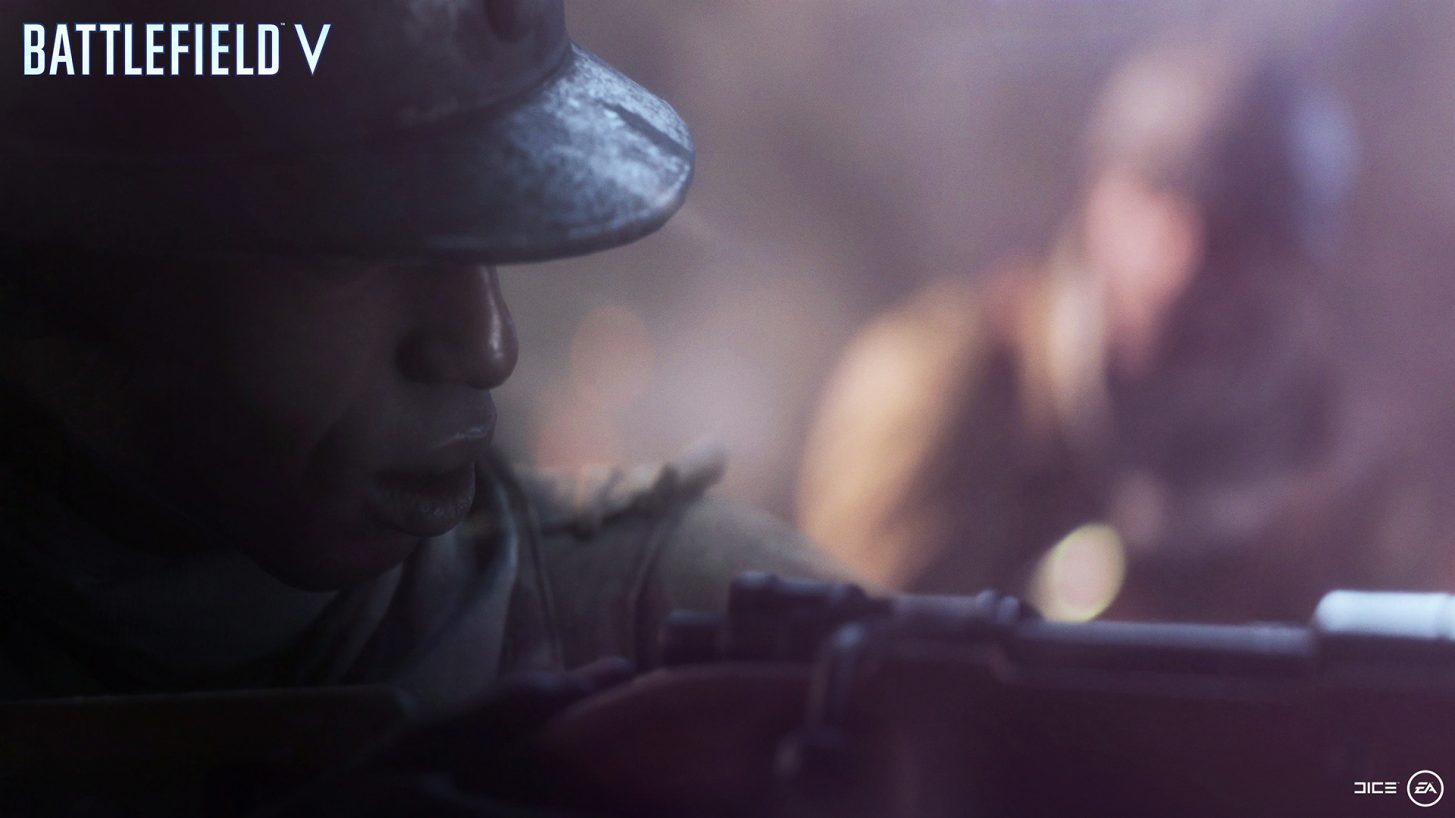
How do you make something more dramatic? Blur it out!
Tirailleur is set during Operation Dragoon – the Allied invasion of Southern France in 1944 – but the story of Senegalese-French fighting doesn’t begin there. They’d been used to maintain order in French-controlled Senegal since the middle of the 19th century. They also saw considerable action in the African theatres of the Franco-Prussian War and the First World War. The latter saw Senegalese Tirailleurs (and other French colonials) moved to France itself, where they fought with distinction throughout the war.
Back to the future in 1940, and Senegalese Tirailleurs are stationed in the south of France. Colonial forces weren’t normally deployed in France herself, but the First World War had devastated France’s male population (this was a primary reason for French surrender; pain still ran deep). French occupation of the Rhineland, too, relied heavily on colonial soldiers. German nationalists (and some white French) were disgusted about being occupied by ‘inferior’ Africans, but the locals appreciated their general friendliness compared to continental French soldiers.
When France was invaded by Nazi Germany and Fascist Italy, Senegalese soldiers resisted as bitterly as their white counterparts.
After the Fall of France, Senegalese Tirailleurs continued the fight. They were instrumental in liberating French colonial territory in Africa and would eventually help in the final defeat of German forces in North Africa. With the North African campaign over, Senegalese forces would serve in other Mediterranean battles up until Operation Dragoon in 1944.
It’s here that we get to the focus of the War Story itself. Senegalese forces were indeed instrumental in the liberation of Southern France, and they were even taken all the way up to the Swiss border. By November of 1944, Southern France had been completely liberated.
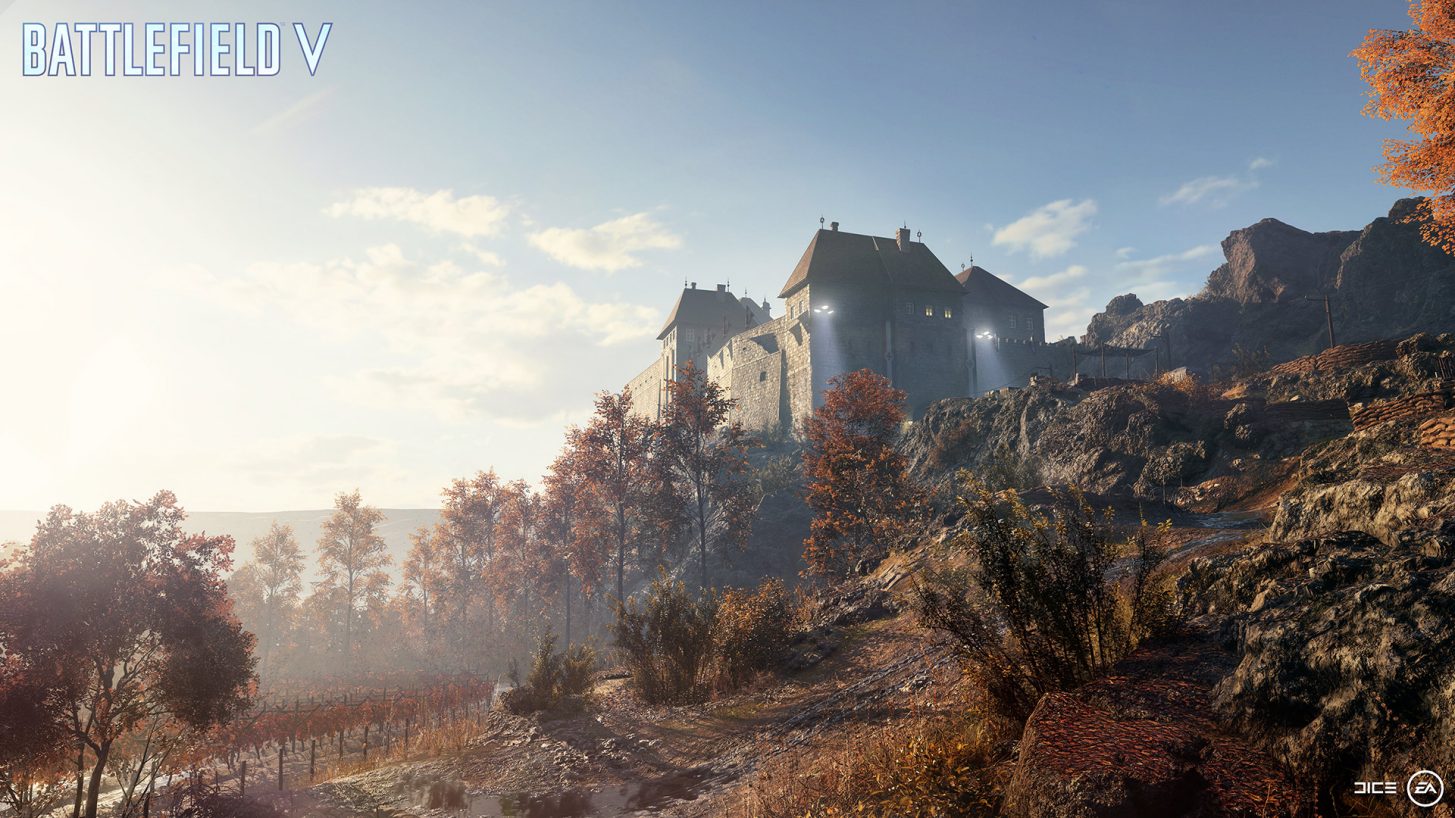
A room with a view, filled to the brim with Germans
However, armed German resistance inside France wouldn’t end until the end of the war. By the time Paris was liberated, more than half of the Free French army was colonial.
Now, it’s here that the story usually has a happy ending. Cheers and kisses from civilians, medals for everyone, and a nice retirement in a cosy villa. But the real world isn’t as cosy as its stories…especially under Colonialism.
After the end of the war, France began a policy called ‘blanchiment’. This roughly translates to ‘bleaching’, and it’s exactly what you think it is. Senegalese and other colonial troops were either returned to their postings in Africa or discharged entirely. They were replaced by white recruits. Those that did get pensions were told that they would get less than their white counterparts, despite being promised otherwise at the start of the war. Most got nothing at all.
Frustrations would reach their bloody peak at the end of 1944’s November. Senegalese Tirailleurs, most of them prisoners of war, who had been sent to a demobilisation camp before being discharged staged a mutiny-demonstration demanding equal pensions.
The armed guards opened fire on them, killing dozens of Senegalese veterans.
Senegal would become independent of France in 1960, and the last Senegalese-French military unit was disbanded four years later. True recognition of French colonial veterans would not begin until the 21st century.
Are we the baddies?
Battlefield V’s last War Story is called The Last Tiger, and it isn’t here yet. Developer interviews have been scarce on details so far, which makes it difficult to perform historical analysis of its context. That said, there are two main factors we can focus on. The first is obvious from the War Story’s name: it’ll be a vehicle-based story taking place inside a Panzer VI ‘Tiger I’ tank.
The second is setting, which is harder to pin down. News sources haven’t been helpful in this regard, but they all place the War Story within the context of the ‘fall of Germany’. For simplicity’s sake, I’ll cover the general collapse of Nazi Germany in the last few months of the war.
The Last Tiger has you play as a Tiger I crew at the tail-end of the war, as they come to metaphorical (and maybe literal) blows about why they’re still fighting. Think Das Boot, but with a tank. So, disillusionment with Nazism is a major theme of the story. I’m not touching that, because I’m rightfully assuming that people reading this aren’t Nazis and have known their whole lives that the Nazis are, yes, the baddies.
What I can talk about without getting death threats from smelly neckbeards on Twitter is the reasons behind the popular German devotion to their own Ragnarök. Put simply, it wasn’t a choice for them. Hitler had taken absolute control over the Wehrmacht by 1945 and refused to allow even strategic retreats. He and the high command entertained the notion that the Allies were on the verge of diplomatic collapse, and that the US and Britain would lock arms with them and skip dotingly back into Russia.
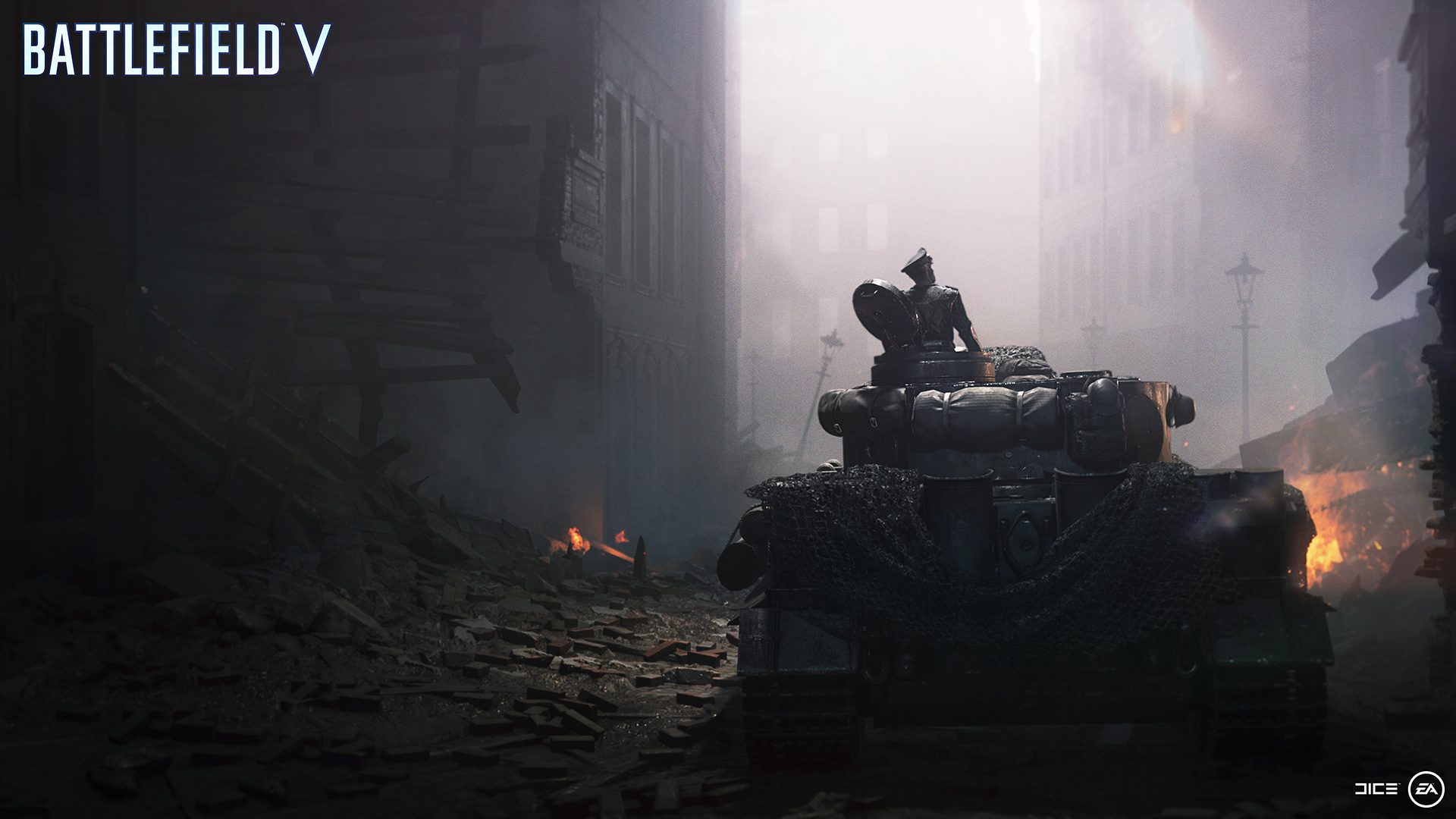
You have two guesses as to how true that theory was
Meanwhile in reality, the Allies’ refusal to consider anything but the unconditional surrender of a common enemy kept their relationship tight. The First World War ended without an invasion of Germany, fostering the myth within Germany that their ‘weak’ politicians were to blame for defeat. After all, they didn’t know that the Allies had absolute dominance over all theatres of war. How could they? They hadn’t even invaded yet. It was this environment that the Allies wished to avoid by turning Nazi Germany into dust until they cried uncle.
On the home front, the Nazi Party had taken absolute control of civil services and ramped up their culture of fear. Collective action against the regime remained impossible. For the average German, soldier or civilian, their lot had become entirely consisted of keeping them and their families alive until the insanity was over. If soldiers were caught deserting, they were shot – leaving their families without whatever income was left. Anybody even remotely considering surrender openly was likewise shot. It’s not a stretch to say that German morale had utterly collapsed.
The propaganda machine still didn’t rest; Germans were told ever-more fictional ‘truths’ about the state of the war, which kept (most of) them in the dark. At least, until their homes were torn apart by battle. There was some truth to claims of Soviet atrocities, which drove mass exoduses to the West. As more and more enlisted soldiers deserted, the Nazis began conscripting anybody who could hold a rifle. These frightened people plucked off of the streets were placed inside a last-ditch effort to muster a fighting force: the ‘Volkssturm’ (people’s storm).
Their ranks included children and the elderly.
Despite the absolute collapse of Hitler’s ‘Thousand Year Reich’ (that lasted only 12 like the little bitch it was), German tanks remained on the field albeit in much smaller numbers.
Germany was late to adopt tanks during the First World War and never possessed the resources to match British or French production. It’s only with the rise of the Nazis and their strong desire for conquest that German tank design rolled up its sleeves and got busy.
Despite enthusiasm, German armour was mediocre throughout the war. In tank-on-tank engagements, they performed exceptionally poorly. Panzer IVs, the most widely-used German tank of the war, were outclassed entirely by the Soviet T-34. American and British designs likewise managed to outperform German designs in North Africa and France. Early war successes are usually chalked up to strong communication and strategy as opposed to the quality of their tanks.
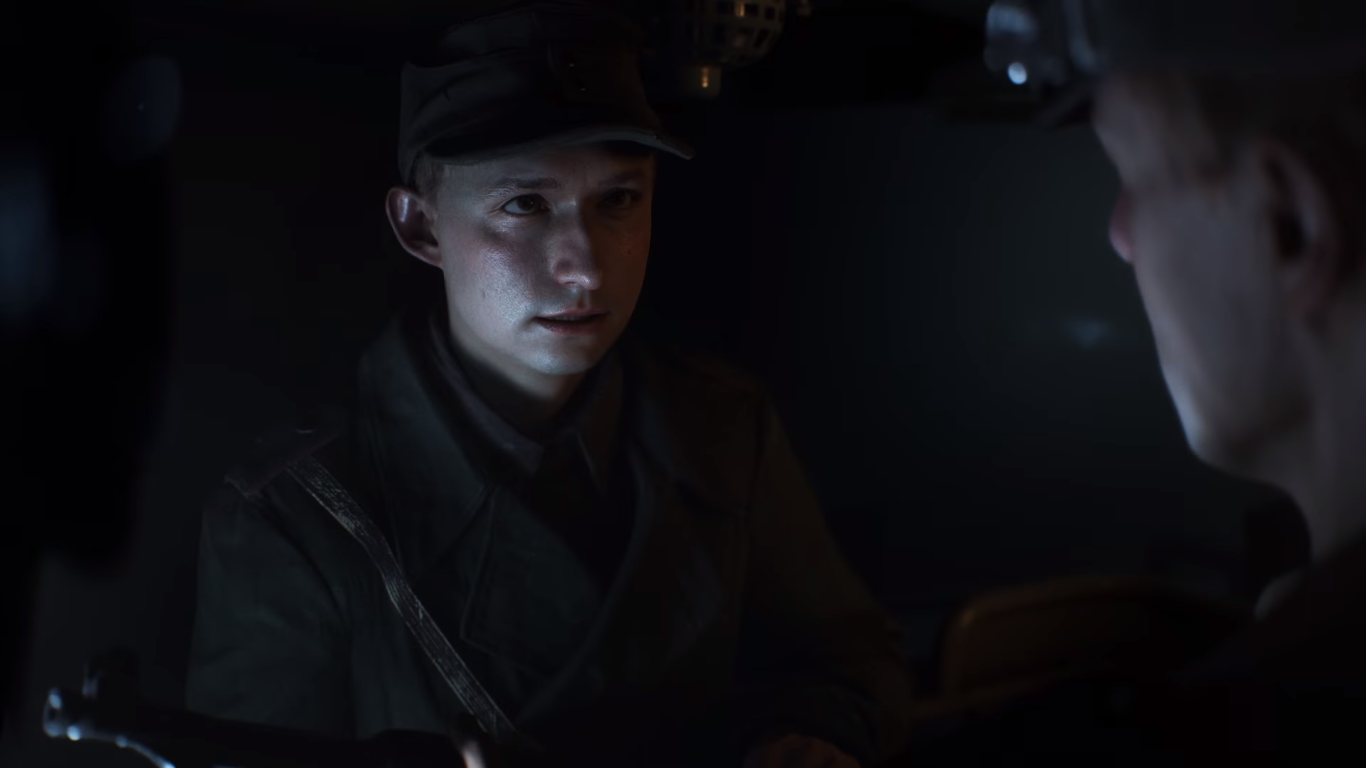
Pictured: A child soldier as depicted in an actual video game that you can buy right now
While German tanks, especially late-war tanks, boasted the best armour and guns in the business this power came at a price. They were expensive to produce and maintain, at a time when German resources were stretched further with each passing day. In addition to that, they became more mechanically unreliable as the war dragged on. Many of the designs were too big to transport by rail which made getting them to the front lines difficult. Their size also made them prime targets for Allied aircraft as German air superiority faded.
Finally, the Allies simply had too many shiny toys that could defeat them on the ground. Infantry-based anti-tank weaponry was commonplace by 1945. As previously mentioned, aircraft had a field day with them. Allied heavy tanks could go toe-to-toe with German ones in the late war. Even if they couldn’t, there were more of them.
The Tiger I is no exception to this. While it proved more reliable than later German tanks, its performance is due to a lack of proper Allied response when it was first fielded in 1943. Let’s repeat that, for the Wehraboos at the back: The reputation of the Tiger I mostly comes from the real lack of any Allied response to it when it was first properly fielded in 1943. In addition, its ability to pick off tanks at an absurdly long range in the wide fields of France and Eastern Europe, due to the accuracy and power of its main gun, was a primary factor in making it a scary tank to see
As 1943 turned into 1944 and 1945, these advantages became less powerful as German tanks were forced into increasingly urban confrontations – making them more vulnerable to flanking from tanks and infantry attacks. The Allies just had more hard counters to German heavy armour by then. The Panzer V would eventually be replaced by the ‘Tiger II’ and later the Panzer VI ‘Panther’ through 1944 (Tiger I tanks remained in use though). But no matter how big and badass German tanks were, they could never have turned the tide.
The Allies were coming, and they were pissed.
My dear friends, this is your hour
So, does Battlefield V hold up in terms of ‘historical accuracy’? In terms of its single-player stories, yes.
If you’re under the assumption that everything must be 100% historically accurate, that’s actually impossible. Academic history isn’t a zero-sum game, and new things are being discovered every day. Even if 100% accuracy was possible, newer information would eventually render it inaccurate.
If you’re concerned about the accuracy of the individual stories, they’re just that: stories. If the historical background and context of the period is correctly portrayed, then you can tell whatever story you like in it. As long as it’s a good one, that is, and Battlefield V’s are pretty good.
If the weapons enemies are using being out of chronological order bothers you, that’s fine. It bothers me too, but please recognise that this is a Battlefield game and not Red Orchestra. Different priorities for different goals, and a German holding an MP44 in 1943 isn’t going to suddenly change the fact that it was developed in 1944. It just means that the German has a cooler gun.
If you’re up in arms about the multiplayer being a mess of different periods, you’re just pulling at hairs. In a video game intended to appeal to as wide an audience as possible, you shouldn’t be surprised if player self-expression takes precedence over historical authenticity. Multiplayer is not intended to be an extension of historical reality, nor has developer DICE made any such pretences to the contrary.
Video games are pieces of history in the same way that war films are. Representations for the general public, but not academic and therefore not empirical. Be grateful that DICE even tried.
Sources/further reading
Anthony Clayton, France, Soldiers and Africa, 1988.
Antony Beevor, Berlin: The Downfall 1945, 2002.
Antony Beevor, The Second World War, 2012.
Ian Kershaw & Allen Lane, The End: Hitler’s Germany 1944-1945, 2011.
Myron Echenberg, Colonial Conscripts: The Tirailleurs Senegalais in French West Africa 1957-1960, 1990.
Myron Echenberg, ‘Morts pour la France’: the African Soldier in France during the Second World War’, Journal of African History, vol. 26, no. 4, 1985, pp. 363-380.
Olav Riste and Berit Nøkleby, Norway 1940-45: The Resistance Movement, 1970.
Richard J. Evans, The Third Reich in History and Memory, 2015
Thomas Anderson, Tiger, 2013.
Thomas Gallagher, Assault in Norway: Sabotaging the Nazi Nuclear Program, 2002.
Arana blames her stunted social skills and her general uselessness on a lifetime of video games. Between her ears is a comprehensive Team Fortress 2 encyclopedia. Her brain remains at large.






